Looking in on the Westside of Ernster it is difficult to imagine that long before a large fish pond was stamping this landscape, where today meadows and pastures are spreading. In old times people often set up a fish pond near running waters or in marshy and heavy soils, not adapted for agriculture. 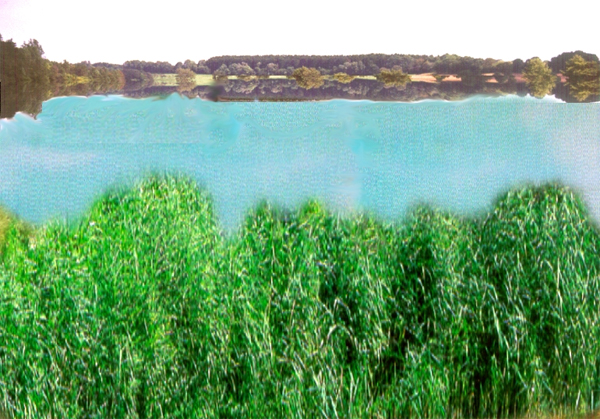
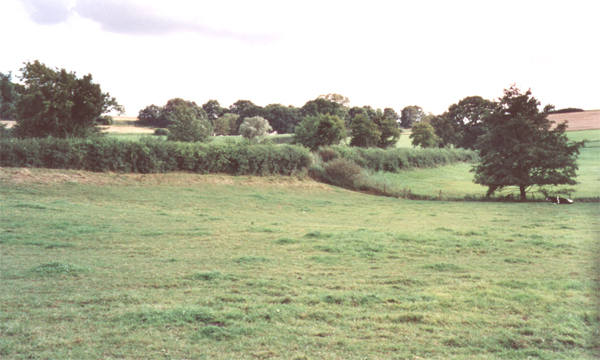
The bank of the old fish pond is still there today.
The small running waters were tail backed by small soil mounds and rivers by massive ramparts. Most often carps, pikes and tenches were raised in these ponds. But later on most of these ponds had been drained and disappeared from the scenery.
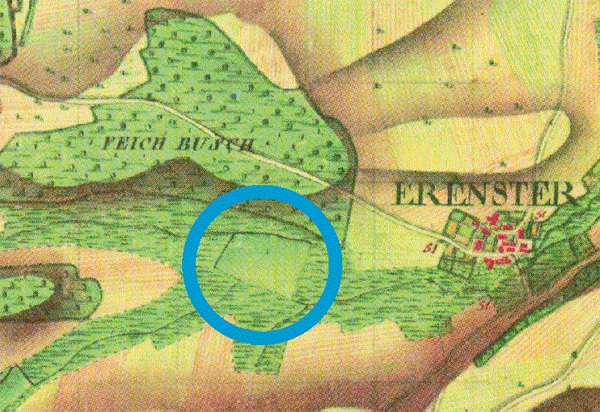
Representation of the fish pond on the old Ferraris Map of the 18th century.
Only old maps (Ferraris Map 1771–1789), engravings or old ramparts are reminding us of these old fish ponds. The rampart, holding the Ernster River is still to be seen today as a witness of the past activities. The fish ponds being often part of a noble’s, a monastery‘s property or even of a community or private person became worth full for renting, pawing or just improving the financial situation.
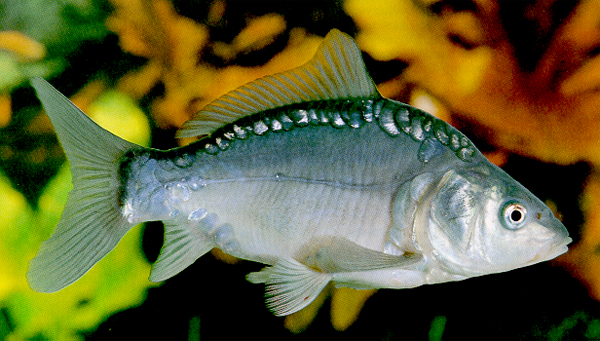
Carps and pikes among others were raised in the pond.
Most of the ponds had been rented by butchers, because, in order to keep their business going even on the numerous fasting days (3 later 2 per week) or during the lent, they could then sell fish to their clients. In the year 1699 such a tenancy agreement had been worked out by a butcher from Luxembourg city, Mr Johann Witter and a rich possessor from Schittringen, Mr Jakob Dumont. 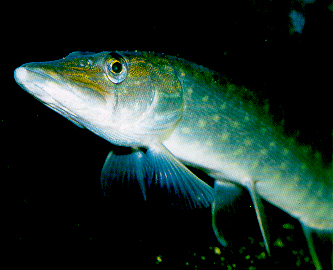 The butcher rented three quarters of the Ernster fish pond. Another interesting reason for the creation of these ponds was the fact that during the summer, it was impossible to store any meat, so that the butcher could offer fresh fish to the population.
The butcher rented three quarters of the Ernster fish pond. Another interesting reason for the creation of these ponds was the fact that during the summer, it was impossible to store any meat, so that the butcher could offer fresh fish to the population.
